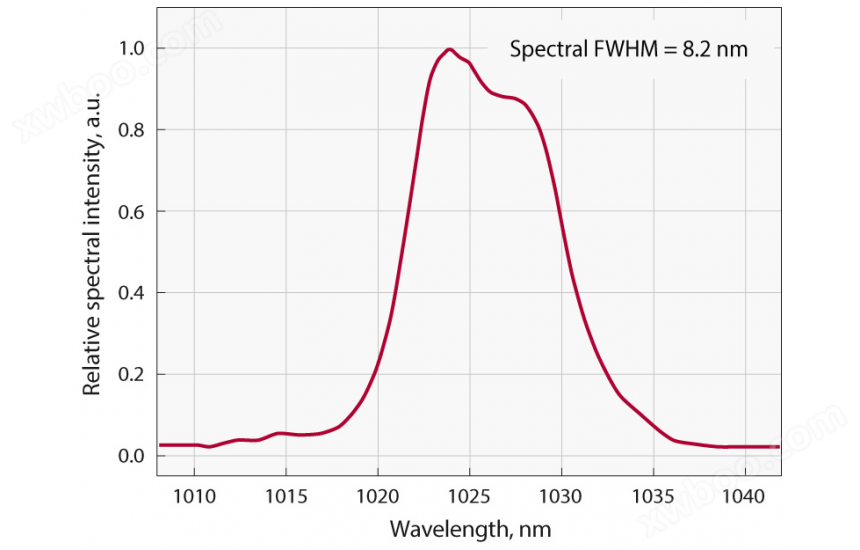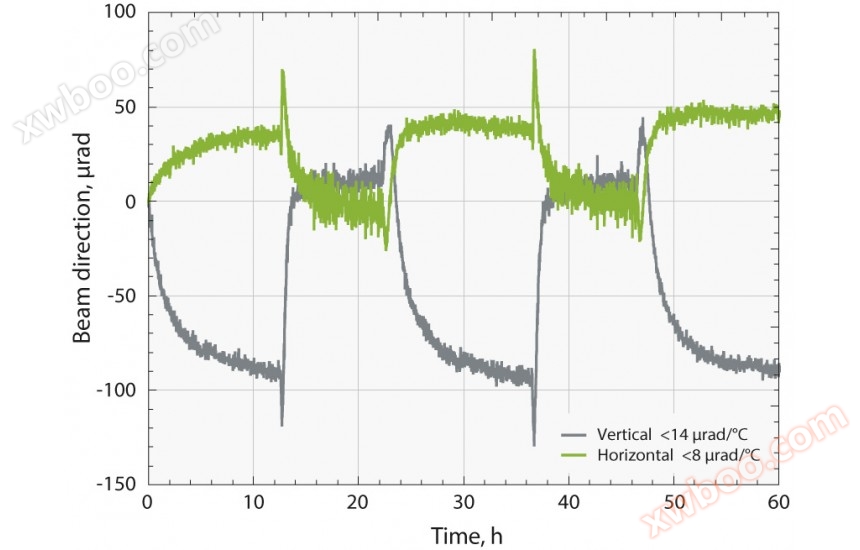CARBIDE femtosecond laser at 1030 nm wavelengthOutput power>80WLaser emits ASE background<10-9'sPure pulseThe latest updated maximum energy specification,No matter what the environment is, it will not affect the beam qualityIndustrial grade reliability and beam stability. The continuous adjustable repetition rate in the range of 60 kHz to 2 MHz, combined with the built-in Pulse Picker, is used for output pulse timing and full-scale energy control with a response time of less than 10 microseconds, allowing for arbitrary adjustment of the emission shape. The pulse duration can be adjusted within the range of 290 fs to 10 ps< Excellent power stability of 0.5% RMS is standard configuration. The laser output can be divided into several picosecond and nanometer level separated pulses, while having the ability to modify the pulse envelope. The harmonic generator option allows the use of femtoseconds at different wavelengths. These parameters can be fully adjusted through software.
[Product Core Words]
High power ultrafast femtosecond tunable laser, femtosecond laser micro nano processing system, femtosecond/nanosecond/picosecond laser pulse measurement, transient absorption, 3D printing femtosecond laser, mid infrared/near-infrared/visible/terahertz femtosecond laser
Related Instruments
Click here to view ☞:Pharos high-power femtosecond pump laser
Specification parameters
product name |
CB3-40W |
CB3-80W |
CB5 |
|
Cooling method |
water-cooling |
Air cooling1) |
||
Maximum average power |
>40 watts |
>80 watts |
>6 watts |
>5 watts |
Pulse duration (assuming Gaussian pulse shape) |
<290 fs |
|||
Pulse duration adjustment range |
290 fs – 10 ps |
|||
Maximum pulse energy |
>200 µ J or 400 µ J |
>800 microjoules |
> 100 µJ |
>83 microjoules |
Basic repetition rate2) |
200 or 100-2000 kHz |
100 – 2000 kHz |
60 – 1000 kHz |
|
Pulse selection |
Single, any basic repetition rate division |
|||
Center wavelength3) |
1029 ± 5 nanometers |
|||
Stability between output pulses4) |
<0.5% rms within 24 hours |
|||
Output power stability |
Root mean square<0.5% within 100 hours |
|||
Beam Quality |
TEM00; M2<1.2 |
|||
polarization |
vertical |
|||
Pulse Selector |
FEC5) |
be included |
Including enhanced contrast AOM6) |
|
Pulse selector leakage |
<0.5% |
<2% |
<0.1% |
|
1. Water cooled versions can be provided upon request.
2. By controlling the pulse selector, the repetition rate can be reduced.
3. It also provides 2nd (515 nm) and 3rd (343 nm) harmonic outputs.
4. Under stable environmental conditions.
5. Provide fast energy control; External analog control input is available.
6. Provide fast amplitude control for output pulse sequences.
optional extension
product name |
CB3-40W |
CB3-80W |
CB5 |
Harmonizer |
Integration, optional |
||
Output wavelength |
515 nm,343 nm,257 nm |
||
optical parametric amplifier |
Integration, optional |
||
Tuning range |
640-4500 nanometers |
||
Continuous shooting mode |
Tunable GHz and MHz bursts with burst function, optional |
Not Applicable |
|
GHz mode (P) |
|||
Pulse separation within a pulse1) |
Approximately 440 ± 40 ps |
||
Maximum number of numbered pulses2) |
1. .. ten |
||
MHz mode (N) |
|||
Pulse separation within a pulse |
~16 nanoseconds |
||
Maximum number of numbered pulses |
1. .. ten |
||
1. Customize spacing according to requirements.
The maximum number of pulses in a burst depends on the laser repetition rate. The number of pulses can be customized according to requirements.
Environmental and Public Utility Requirements
product name |
CB3-40W |
CB3-80W |
CB5 |
operation temperature |
15 – 30°C(59 – 86°F) |
17 – 27°C(62 – 80°F) |
|
relative humidity |
<80% (non condensing) |
||
electric |
110 – 220 VAC,50 – 60 Hz |
||
Water cooled type


Long term output power stability (water-cooled type) CARBIDE Spectroscopy (Water Cooled Type)


CARBIDE Pulse Width (Water Cooled Type) CARBIDE Typical Spot (Water Cooled Type)
Air cooled type


Typical output power of CARBIDE vs pump current (with frequency multiplier)CARBIDE's output power in harsh environments


The beam position of CARBIDE in harsh environments and the beam direction of CARBIDE in harsh environments

Adverse environmental temperature and humidity


Typical fundamental frequency spot of CARBIDE 60 kHz, 5 WCARBIDE typical second harmonic spot 100 kHz, 3.4 W


CARBIDE Typical Triple Frequency Spot 100 kHz, 2.2 WCARBIDE Typical Quadruple Frequency Spot 100 kHz, 100 mW
Product size
product name |
CB3-40W |
CB3-80W |
CB5 |
LASER |
632 (length) × 305 (width) × 173 (height) mm |
631 (length) × 324 (width) × 167 (height) mm |
|
power supply |
280 (length) × 144 (width) × 49 (height) mm |
220 (length) x 95 (width) x 45 (height) mm |
|
Water cooler |
590 (length) × 484 (width) × 267 (height) mm |
NOT REQUIRED |
|
ADJUSTABLEGHz and MHzBiBurst function
CARBIDE-CB3 has an optional burst function called GHz and MHz burst, called BiBurst. The distance between burst groups is called nanosecond burst, N(MHz-Burst)。 The distance between the neutron pulses in this group is called picosecond burst, P (GHz burst).
In single pulse mode, one pulse is emitted at a fixed frequency at a time. In burst mode, the output consists of several picosecond burst data packets, with equal time intervals between each packet. Each group can contain multiple sub pulses, and each sub pulse is also separated by equal time intervals.
The high pulse energy femtosecond laser with flexible BiBurst functionality has brought new production capabilities to high-tech manufacturing industries, such as consumer electronics, integrated photonic chip manufacturing, bracket cutting, surface functionalization, future display manufacturing, and quantum computing.
The BiBurst material manufacturing field includes:
Drilling and cutting of brittle materials
Deep carving
Selective excision
Transparent material volume modification
hide mark
Surface functional structuring.

